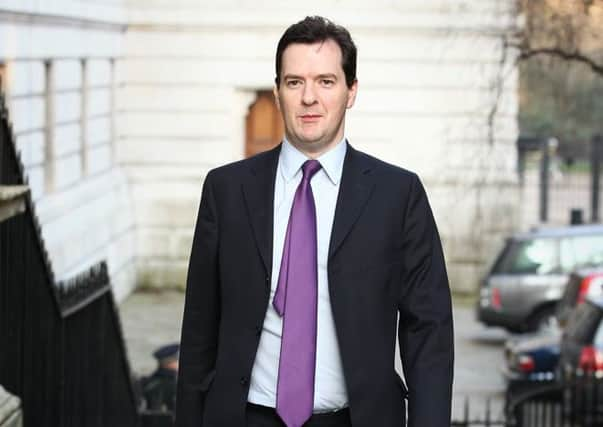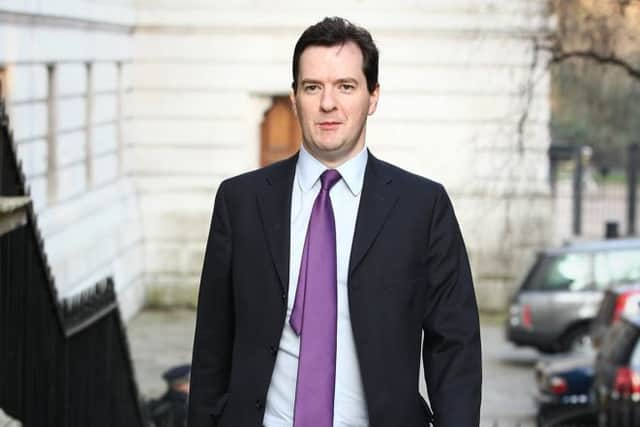Boost for consumers as inflation falls


The Consumer Prices Index (CPI) dipped to 1.9 per cent in January from 2 per cent in December, prompting experts to predict the start of a long run of below-target inflation that will help ease the burden on stretched household budgets.
Although wage increases remained less than half the rate of inflation, at 0.9 per cent, it is thought that any sustained rise in earnings combined with falling inflation could give consumers some much-needed spending power.
Advertisement
Hide AdAdvertisement
Hide AdA drop in leisure costs was behind the surprise relief on household finances, with DVDs and entrance fees for a range of family attractions having fallen in price, while the traditional post-Christmas rise in whisky prices was also lower than expected.


Yesterday, economists forecast that inflation will remain under the 2 per cent target throughout 2014, raising hopes that wage growth will finally overtake rises in the cost of living. Last night, business leaders in Scotland warned further investment was needed to secure a long-term recovery.
Economists were more upbeat, claiming that Britain was now facing a “golden age” of strong economic growth and low inflation – dubbed the “Goldilocks scenario” by one expert.
Prime Minister David Cameron said in a message on Twitter: “Today’s fall in inflation is more evidence our long-term economic plan is working. We want to ensure a secure future for hard-working people.”
The drop in inflation was good news for Chancellor George Osborne and marked the first time CPI had fallen below the Bank’s 2 per cent target since November 2009. It fell to the threshold in December, ending a lengthy period of stubbornly high inflation.
The figures from the Office for National Statistics (ONS) showed energy prices had little impact on inflation last month, as the recent round of price hikes was cancelled out by subsequent reductions in tariffs due to the government’s move to reduce environmental levies on bills. Gas and electricity providers have been scaling back their winter price rises to take account of the green levy shake-up. British Gas lowered its recent tariff increase by 3.2 per cent.
Along with the fall in recreation and culture prices, the annual rate of inflation for alcoholic drinks and tobacco fell to 4.5 per cent – the lowest for nearly four years.
However, last month’s January sales on the high street had little impact, despite recent figures from the British Retail Consortium showing shop prices falling at their fastest rate since its records began – down by 1 per cent against a 0.8 per cent drop in December.
Advertisement
Hide AdAdvertisement
Hide AdLast night, the Scottish Government said the figures followed six consecutive quarters of growth in the Scottish economy, with output also accelerating.
A spokeswoman said: “The continued progress in Scotland’s economic recovery is helping to create more jobs and opportunities, with Scotland outperforming all nations of the UK in terms of employment and inactivity rates.”
The Bank of England last week delivered a sharp upgrade to its growth outlook for 2014, to 3.4 per cent from 2.8 per cent.
Slack in the economy and falling inflation had given it breathing space to keep interest rates at ultra-low levels.
The Bank extended its pledge to keep rates at historic lows after abandoning its guidance linked to unemployment, as a result of better than expected rates of joblessness.
It replaced the old guidance with a policy based on a more complex framework, linking rates to the output gap in the economy as measured by 18 indicators – dubbed “fuzzy guidance”.
Inflation has now fallen for seven months in a row, bringing it down to a level last seen in October 2009 when it hit 1.5 per cent. Since then, Britons have endured soaring costs with inflation reaching a recent peak of 5.2 per cent in September 2011.
Samuel Tombs, at consultancy Capital Economics, said there was a “good chance” inflation would fall as low as 1 per cent by the end of this year.
Advertisement
Hide AdAdvertisement
Hide AdHe added: “This should enable real earnings to rise for the first year since 2007 and allow the [Bank’s] monetary policy committee to keep interest rates on hold until well into next year.”
Liz Cameron, chief executive of the Scottish Chambers of Commerce, said: “The economic signs are looking good at the moment but it is important to remember that if the recovery is to be sustainable then businesses must have the confidence to invest for future growth.”
David Kern, chief economist at the British Chambers of Commerce, said weaker inflation would help keep interest rates low, which was good news for business.
He added: “An economic environment of low inflation and low interest rates allows people and firms to plan ahead, as they can be confident they will not encounter any unwelcome surprises.”
Meanwhile, the pound fell against a variety of currencies yesterday on the back of the expectation that interest rates will stay low. Sterling had reached a four-year high against the US dollar on Monday amid speculation that rates would start to climb.
Chris Williamson, chief economist at Markit, said: “This ‘Goldilocks’ scenario adds to the scope for policy-makers to keep their foot on the accelerator for longer via lower interest rates, to help drive a strong and more sustainable recovery.”
Today’s unemployment figures will be watched closely for any changes to wage growth, while there is expected to be further optimism over the economic outlook with another fall in joblessness anticipated.
The turnaround in the economy and easing of household budget pressures will come as a pre-election boost for the coalition.
Advertisement
Hide AdAdvertisement
Hide AdCathy Jamieson, Labour’s shadow treasury minister, welcomed the drop in CPI, but cautioned that the “cost of living crisis continues”.
The ONS said another notable drop in retail prices came from furniture and household goods, where discounts were ramped up from a year earlier.
David Bell: Interest rate rise is looking increasingly likely
CONSUMER prices increased by 1.9 per cent between January last year and this year. This is the first time inflation has fallen below the government’s target rate of 2 per cent since 2009.
It may stay low for some time in the first extended period of low inflation since 2005.
The governor of the Bank of England is unlikely to have to write a letter to the Chancellor explaining why inflation is well above target anytime soon.
A stronger pound has helped, coupled with weak demand on the high street.
The biggest restraints on inflation came from alcohol and tobacco, furniture and household goods, and recreation, where prices actually fell in the past 12 months.
Advertisement
Hide AdAdvertisement
Hide AdPerhaps surprisingly, electricity and gas prices did not exert any upward pressure on inflation over the same period.
The effects of the recently announced gas and electricity price increases will not be reflected in the Consumer Price Index until next year. But real wages are still falling.
For the 12 months to November 2013, weekly earnings (including bonuses) only grew by 0.7 per cent.
It has been another year of falling living standards for most families.
After peaking in 2009, real wages in 2013 had fallen back to the level of 2004.
This is the longest period of decline in real living standards since 1964, when data on wages and prices started being collected on a comparable basis.
There may be some respite in Scotland over the next 12 months given the Bank of Scotland’s positive survey on the jobs market, but although the Scottish labour market seems to be effective in creating new jobs, growth in real wages is, at best, likely to be weak.
Even though inflation is falling, it seems that the likelihood of an interest rate rise is increasing.
Advertisement
Hide AdAdvertisement
Hide AdThe Bank of England has implicitly accepted that it may increase rates in the second quarter of next year – around the time of the UK election – which is consistent with market expectations.
However, the most recent Inflation Report suggests that the Bank’s central expectation is that price inflation will remain around 2 per cent until at least 2016.
It may believe that an increase in interest rates from the current level of 0.5 per cent will not significantly weaken the economy and will start to bring money markets closer to a “normal” state.
If price inflation stays below 2 per cent, this action will be difficult to justify.
• David Bell is professor of economics at Stirling University